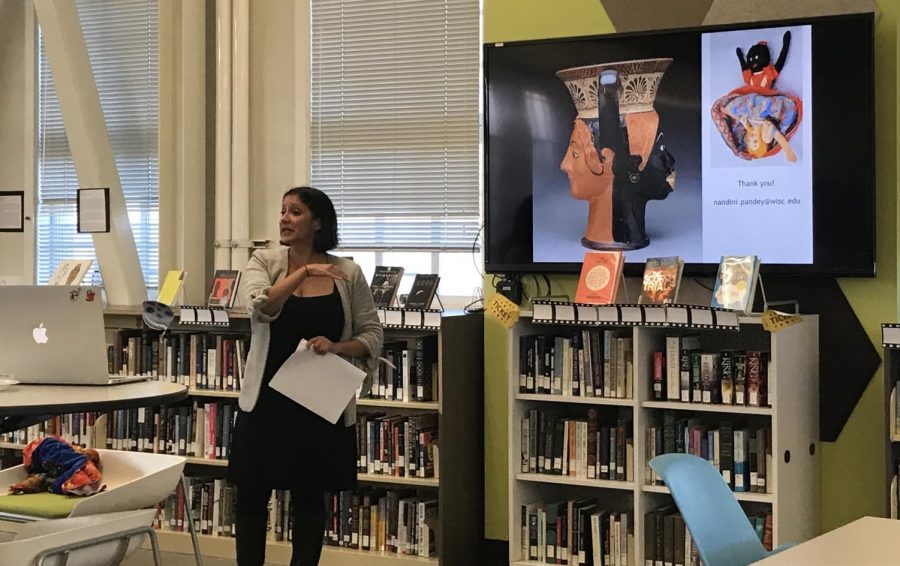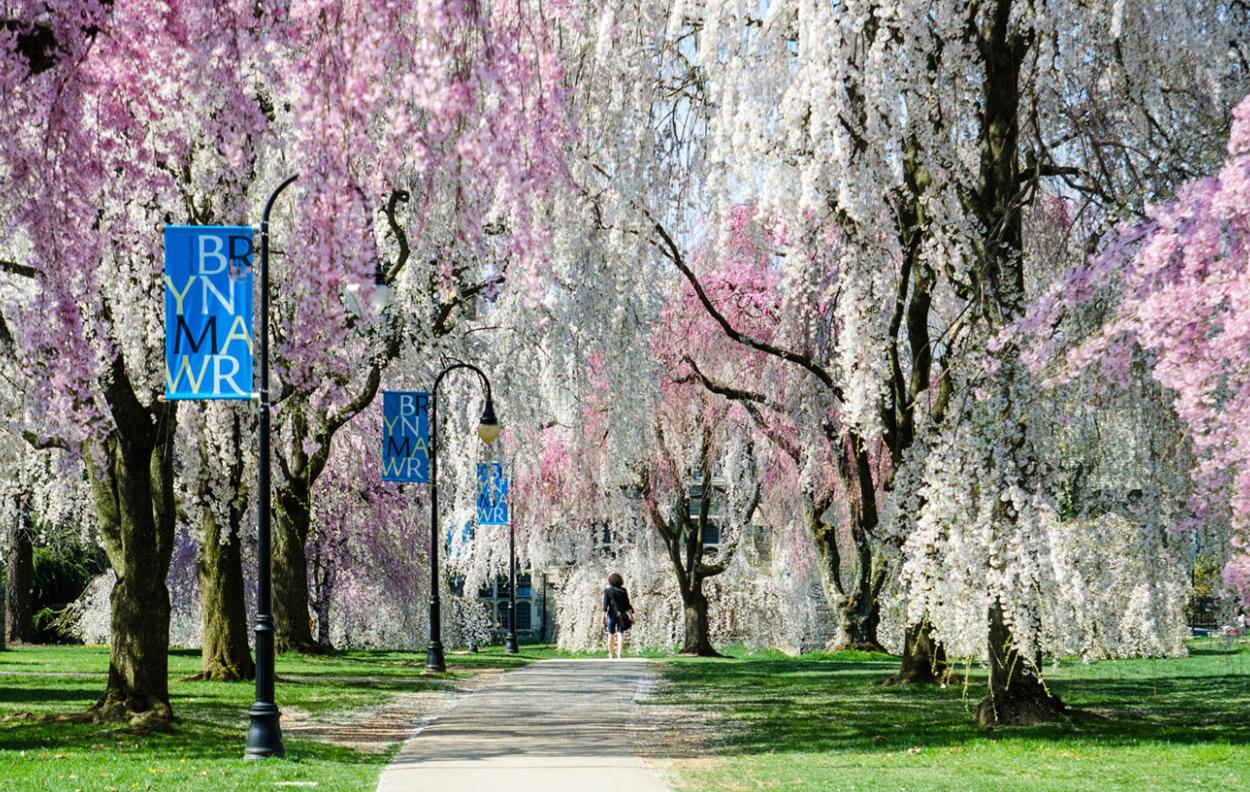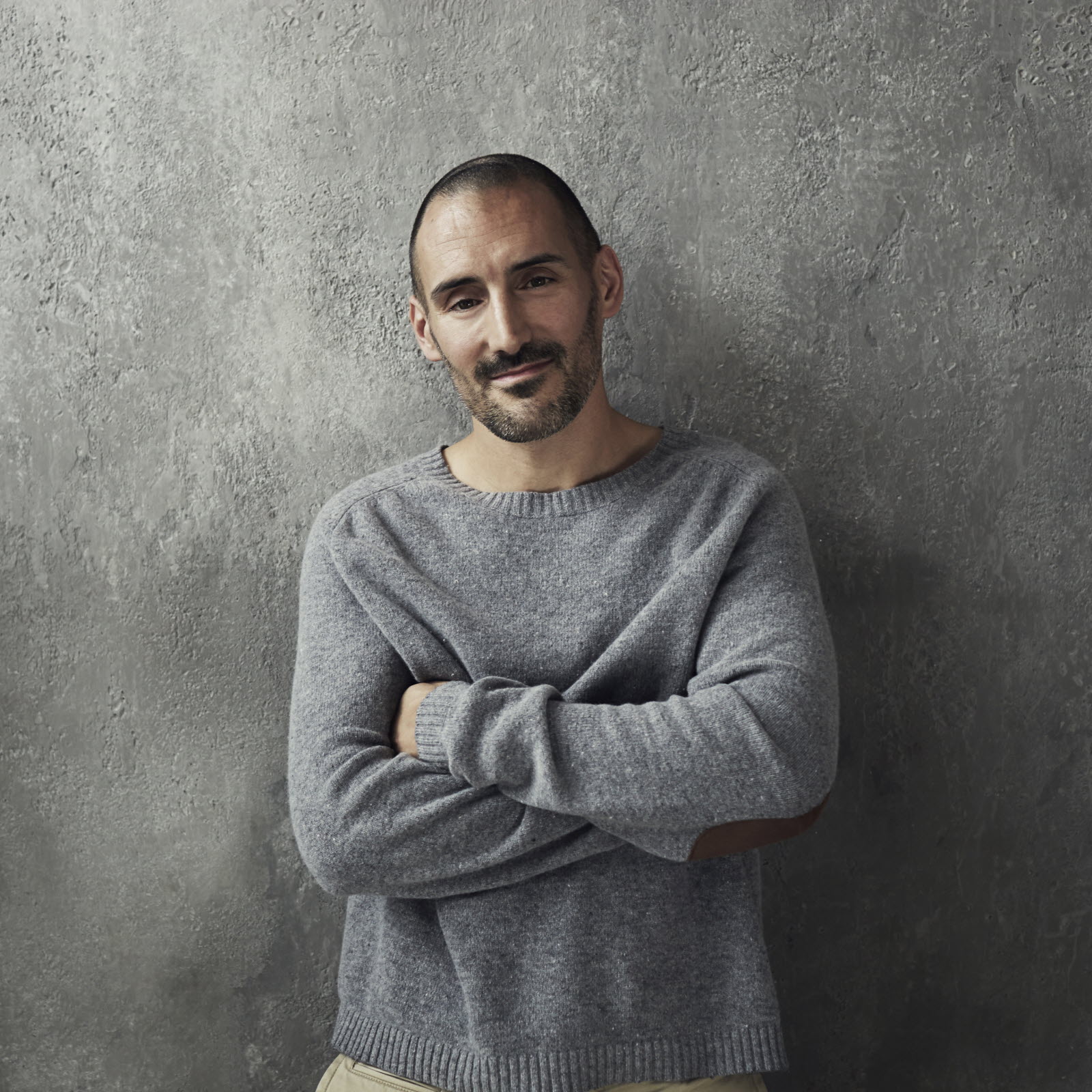“Bryn Mawr must deal with racism on its campus and in its courses,” reads the introduction to the 1969 list of demands published in the Bi-College News by Black Bryn Mawr students. The list, created to address curricular racism on campus, was on display at the Strike 101 Exhibition along with the many others that would follow from subsequent student protests. The exhibition was organized by Bryn Mawr’s Self Governance Association (SGA) in collaboration with the 2020 Strike Collective.
You might assume, at first glance, that the exhibition is a retrospective look at one strike that took place during one year of Bryn Mawr’s long and complicated history. Moving through the room though, you’d recognize that the organizers intended something very different. At each point, the event organizers invite attendees to consider the connections between the most recent protest movement with the many others that preceded it.
“We wanted to incorporate the historical movements and protests that have happened at Bryn Mawr while focusing on the 2020 strike. Preserving that history and passing it down is really important to us,” said Ananya Hindocha BMC, ‘23, SGA President and Head Organizer of the exhibition. “Institutional memory at a place where everyone cycles out in 4 years is really really short, and that’s something that [administration] can depend on to maintain the status quo. If there’s not this continual pressure, people forget what needs to be done”

The effect this loss of institutional memory has on the quality of life for the student body is obvious. The demands of the 2020 strike are placed alongside the demands of a similar strike that took place in 2015. The large poster displayed at the front of the room detailing the events leading up to the 2020 strike goes back as far as 1970. Along the walls of the Neuberger Campus Center were signs from a 2018 protest over the renaming of the Old Library, formerly known as the M. Carey Thomas Library. Each document echoes the next, the 2020 strike demands the hiring of faculty of color to specifically address and tend to the needs of BIPOC students, just like the 2015 strike, and the one before it in 1969. The protest signs demanding the removal of M. Carey Thomas’s name from one of the library buildings would see their words repeated again in 2020, with similarly little success in execution.
The exhibition framed the 2020 strike not as a singular event unto itself, but as one development in the long history of BIPOC students’ struggle for racial equity at their institution at Bryn Mawr. It seems that structural inequality breeding mass student uprisings is a cycle repeated every couple of years, as administration continually fails to bring about the systemic change they promise to students.
Along with the documents put on display, the exhibition included a panel, mediated by Ananya Hindocha, and featuring Fatmata Sesay BMC, ‘23 and Beza Wondwossen BMC, ‘23, Black at Bryn Mawr tour guides; Keyla Benitez BMC, ‘24, Mujeres* archivist; and Sa’De Black, Bryn Mawr College alum and member of the 2020 Strike Collective. While the exhibition was open to the Bryn Mawr College community at large, the panel was exclusively for current students in order to allow strike witnesses to pass their knowledge down to younger classes. “We’ve gotten to a point where half the student body wasn’t here during the strike, but the ways that it impacts students here is still very strong. Something that SGA is really passionate about is making it so that new students could learn about [the strike] and the history of student resistance at Bryn Mawr,” Ananya explained.

In addition to providing basic background information about the impetus and mechanics of the 2020 strike, the panelists also took the opportunity to speak on their personal emotional experiences during the 2020 school year. “As a student, I was very hurt. I was hurt to see Bryn Mawr posing as trying to be more diverse, more equitable, but then seeing how the school is not moving towards that [goal]. I was even more hurt when I saw professors, especially professors I looked up to, not see the strike as a serious [issue]. It was sacred for not just me, but also for students coming in after me.” said Fatmata Sesay.
It’s clear from the discussions that the job of protecting future students, especially students of color, from the harm that comes with attending a racist institution was a responsibility that weighed heavily on strike panelists. “As BIPOC students, we also think about future students. We’re thinking about how this is going to affect others, not just students who are here at this time but students who are yet to come,” said Keyla Benitez. Sa’De Black echoed the statement, adding “I can’t just be a student, I have to be something more than that to make sure that my experience and other people’s experience at the college are great.”
As strike participants and witnesses become juniors, seniors, and eventually alums, the focus shifts to ensuring younger classes are armed with the knowledge they need to continue to walk in the legacy of the 2020 strike. “I think one of things we can do as students is push ourselves to learn more. It’s important to know the history of the campus you’re attending,” said Fatmata. Ananya stressed that, in addition to individual action, support at the institutional level is essential to guaranteeing the strike lives on. “I think if I were to sum it up, [I want] student-led, institutionally supported expressions and research that doesn’t have strings attached to how it is presented,” she said.
Even with the prospect of leaving future generations of Masters the task of keeping the flame of over 50 years of student advocacy alive, the Strike Exhibit and its collaborators brim with hope for the future. As Beza Wondwosen put it, “The BIPOC before have worked so hard to make Bryn Mawr what it is today. We’re trying to keep that momentum. The institution itself will not progress without the students. The hopefulness I have is for the students. I’m confident in the [younger classes] to continue our work.”




